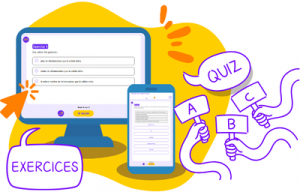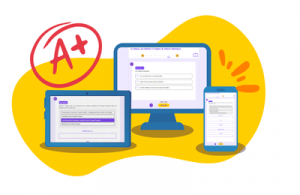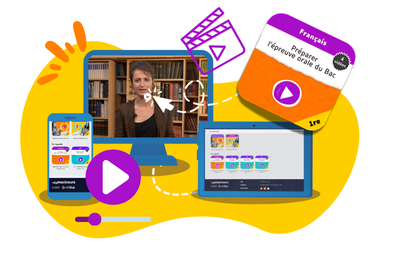The English school system- Seconde- Anglais
- Fiche de cours
- Quiz et exercices
- Vidéos et podcasts
Education in Britain is provided by the Local Education Authority (LEA) in each county. It is financed partly by the government and partly by local taxes.
Until September 1988, each LEA was free to decide
how to organise education
in its own area. But the National
Curriculum was introduced in September 1988.
It sets programmes of
study in a range of subjects for all state schools in England and
Wales. Independent schools
need not follow it, though many do.
The academic year starts in September and is divided into three terms.
Pupils have holidays at Christmas, Easter and during the summer, and short breaks at half-term.
In the past, secondary
schools used to be very selective since they
accepted the pupils only if they had passed an exam
called the eleven-plus.
The ancient grammar
schools are not as numerous as in the past
and have been turned into comprehensive schools.
Children study subjects in the national curriculum and take SATs at 14, and then prepare the GCSEs (General Certificate of Secondary Education) in as many subjects as they want. Pupils who want to go to university need to pass their A levels in two or three subjects.

Des quiz et exercices pour mieux assimiler sa leçon
La plateforme de soutien scolaire en ligne myMaxicours propose des quiz et exercices en accompagnement de chaque fiche de cours. Les exercices permettent de vérifier si la leçon est bien comprise ou s’il reste encore des notions à revoir.

Des exercices variés pour ne pas s’ennuyer
Les exercices se déclinent sous toutes leurs formes sur myMaxicours ! Selon la matière et la classe étudiées, retrouvez des dictées, des mots à relier ou encore des phrases à compléter, mais aussi des textes à trous et bien d’autres formats !
Dans les classes de primaire, l’accent est mis sur des exercices illustrés très ludiques pour motiver les plus jeunes.

Des quiz pour une évaluation en direct
Les quiz et exercices permettent d’avoir un retour immédiat sur la bonne compréhension du cours. Une fois toutes les réponses communiquées, le résultat s’affiche à l’écran et permet à l’élève de se situer immédiatement.
myMaxicours offre des solutions efficaces de révision grâce aux fiches de cours et aux exercices associés. L’élève se rassure pour le prochain examen en testant ses connaissances au préalable.

Des vidéos et des podcasts pour apprendre différemment
Certains élèves ont une mémoire visuelle quand d’autres ont plutôt une mémoire auditive. myMaxicours s’adapte à tous les enfants et adolescents pour leur proposer un apprentissage serein et efficace.
Découvrez de nombreuses vidéos et podcasts en complément des fiches de cours et des exercices pour une année scolaire au top !

Des podcasts pour les révisions
La plateforme de soutien scolaire en ligne myMaxicours propose des podcasts de révision pour toutes les classes à examen : troisième, première et terminale.
Les ados peuvent écouter les différents cours afin de mieux les mémoriser en préparation de leurs examens. Des fiches de cours de différentes matières sont disponibles en podcasts ainsi qu’une préparation au grand oral avec de nombreux conseils pratiques.

Des vidéos de cours pour comprendre en image
Des vidéos de cours illustrent les notions principales à retenir et complètent les fiches de cours. De quoi réviser sa prochaine évaluation ou son prochain examen en toute confiance !









